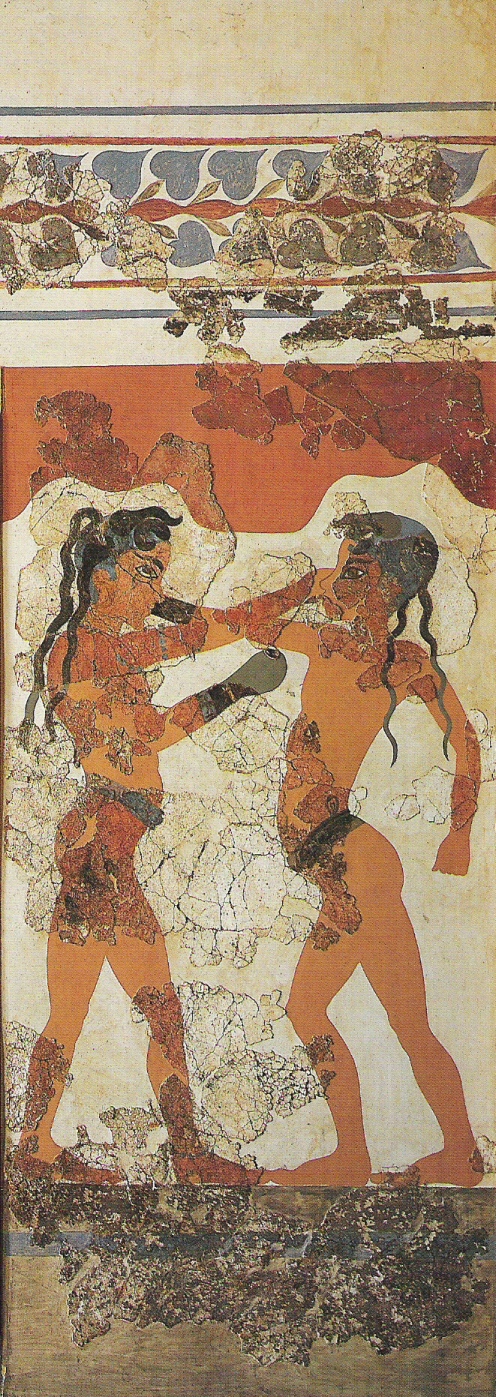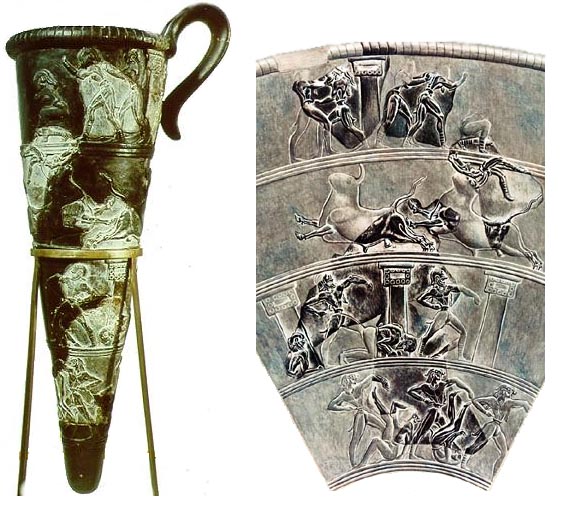Is it this one?

The “Boxing Boys,” fresco from Thera (modern-day Santorini), c.
1600 B.C.E.
Source: The Thera Foundation at www.therafoundation.org/ akrotiri/buildingbeta/boxingboysroombeta1southwall/view.
If so it's from 1500 years AFTER the Nintu Temple carving. Which was found in a region near the Tigris river.

The “Boxing Boys,” fresco from Thera (modern-day Santorini), c.
1600 B.C.E.
Source: The Thera Foundation at www.therafoundation.org/ akrotiri/buildingbeta/boxingboysroombeta1southwall/view.
If so it's from 1500 years AFTER the Nintu Temple carving. Which was found in a region near the Tigris river.

 Yes, I see what you mean.
Yes, I see what you mean.
Comment